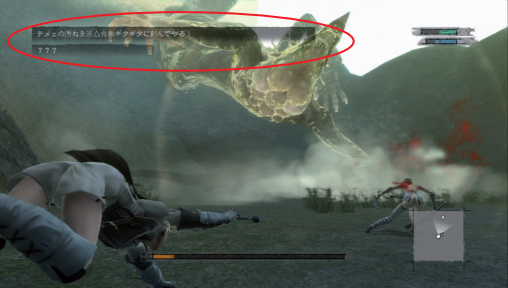With the project intended for global sim-ship release, an interview (Game Watch 2010) with the producer, Yosuke Saito of Square Enix, and the director, Taro Yokoo of the game developer Cavia, reveals, first of all, the international make-up of the production team consisting of Japanese, American, and European members and also how from an early stage in the development their feedback was reflected in the game. This was intended to break the post-gold model which Square Enix had routinely been using and was an attempt to incorporate international viewpoints of game development from the outset. Such an approach is also reflected in the way the game addresses different regions by featuring a different landmark according to the locale, such as the Empire State Building, Big Ben and the Eiffel Tower in place of the original Tokyo Tower. Regarding the character design, while the Japanese side were in favour of having an adolescent Nier as the main protagonist, the American side opposed having the feeble looking adolescent as the hero by insisting that such a character would not be convincing when handling heavy-duty weapons, and thus would not be treated seriously by the NA audience.

Figure 2 Nier in NierGestalt versus Nier in NierReplicant © 2010 SQUARE ENIX CO., LTD. All Rights Reserved. Developed by Cavia Inc.48
Despite such opposition, the original Nier character design was strongly supported by the Japanese team and eventually it was decided it would be retained, but only for the version to be released in Japan. This decision involved changes in parts of the scripts, voice, and the camera positions due to different heights between the adolescent and the adult Nier. This example alone demonstrates how seriously the localization process is treated for different market receptions. It also illustrates the way in which the scope of localization when applied to entertainment products is dynamically changing whereby providing a mechanism to serve specific regions with specific versions of a product with changes that are not essential in terms of functionality.
In addition to such a significant macro adjustment in the game's character design, another relevant aspect from a micro perspective relates to more subtle changes made during localization regarding the image of Kaine. Introduced as a hermaphrodite with an apparent female look, this character's signs of masculinity – visible in cut-scenes in the Japanese version – were toned down in the US release (Cooke 2010, 24). The depiction of different sexual phenomena such as transvestism is fairly common across many Japanese games, and is therefore familiar to the Japanese gamers. However, it is often an element subject to changes in localized versions and also affects age ratings. Characterizing of Kaine by highlighting the way s/he speaks also provides a relevant example in relation to localization.

Figure 3 Subtitles with vulgarities masked by pseudo-censorship symbols
© 2010 SQUARE ENIX CO., LTD. All Rights Reserved. Developed by Cavia Inc.49
(with our emphasis)
Kaine is cursed by a male demon and speaks with a foul mouth, and Kaine's line subtitled in Japanese is often marked with
pseudo-censorship symbols, masking certain offensive words as in Figure 3(「テメエの汚ねえ※△々をギタギタに刻んでやる。」[『'llchop your filthy XXXX into pieces]). The voiced Japanese dialogue deliberately used a censorship-like technique and bleeped out the profanity. However, the English voiced version got away with the use of vulgarities while its intralingual subtitles used a similar technique to the Japanese subtitles by masking what are considered to be offensive words.
The original intention had been for voices in the Japanese version to be in English, but subsequently it was decided to use Japanese voices, and the Japanese actors had to fill in the gaps (that is, the words which were originally masked in the subtitles), which were to be replaced by bleeps. This was necessary in order to measure the length of the line of the dialogue to fit in the allocated space. The mimicked use of the bleep censor in any major games had not been seen before and was the producer’s attempt to try a new approach. However, the US team opposed the idea of the use of bleeps as they argued that they would sound farcical to US audiences.
上一篇:Translator's Agency and Transcreation
下一篇:Taboo/Discriminatory Words in the Localization

微信公众号搜索“译员”关注我们,每天为您推送翻译理论和技巧,外语学习及翻译招聘信息。